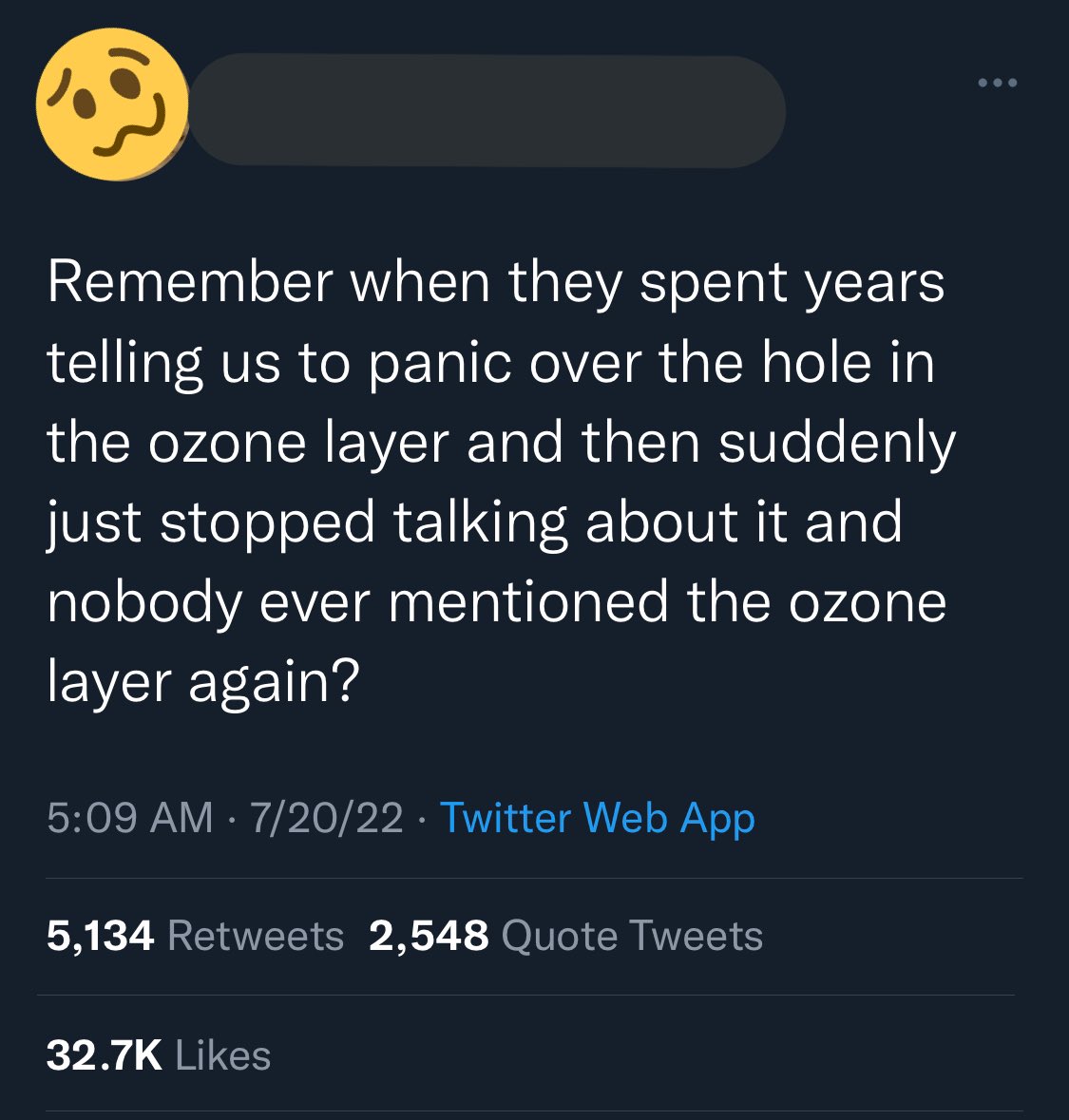So this tweet is obviously the kind of bait that can only be produced by a person who desperately desires any sort of attention, even if at the expense of their own reputation…but this story is actually really interesting and mostly ignored because of how it’s…good. https://t.co/MAufXw93Oc

It’s a story of international cooperation, government competence, and innovation…all things that do not make anyone angry…so of course we never heard about it.
CFCs were a super-useful kind of chemical that we used mostly helping us cool things down, but also to help propel hairspray or spray paint out of cans. It wasn’t toxic, wouldn’t catch fire, and was great for these applications.
But then scientists started to realize that, once it got to the upper atmosphere, it was reacting with ozone…which is one of the main ways UV radiation gets blocked by our atmosphere. There was a hole forming in the ozone layer.
Did everyone individually then /choose/ to stop using hairspray?? No, scientists convinced governments and governments convinced each other to sign onto a multi-lateral treaty that swiftly phased out the use and manufacture of CFCs.
The Montreal Protocol was passed in 1987 and was the first universally ratified treaty in UN history.
Only 14 years had passed between scientific consensus on the harms of CFCs and the banning of CFCs.
Since then, the amount of CFCs in the atmosphere has dropped dramatically and the ozone hole’s growth was halted and then reversed. https://t.co/Y6YnXzYwcz

Sometimes people tell me that this is an example of how fighting climate change could be very easy, but in fact it is not.
CFCs presented an immediate danger, but most important, there were chemicals that could easily replace them that were only very slightly more expensive.
Our economy (until quite recently at least) runs entirely on fossil fuels. It is a far, far harder switch.
But the Montreal Protocol is a reminder that the world can come together to help itself, if the danger is clear and the solution is within reach.
